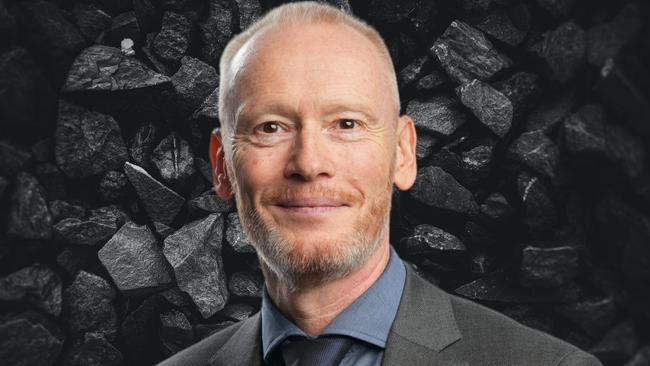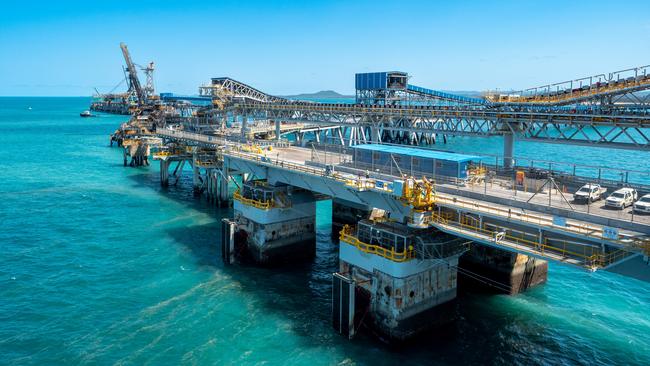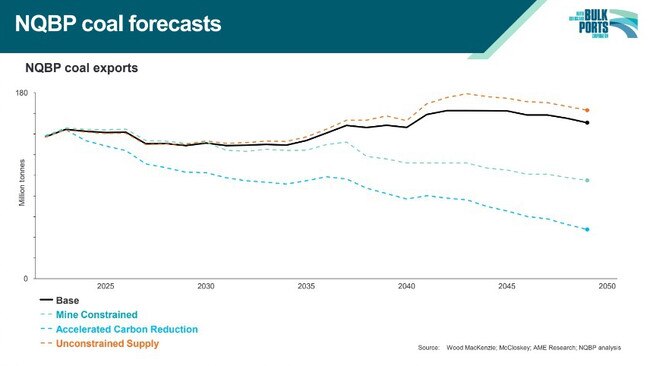Why Queensland coal exports will remain strong to 2050
The CEO behind Qld’s biggest coal ports, and the largest coal export terminal in the Southern Hemisphere, says exports show no signs of slowing except if a ‘doomsday’ scenario were to come true.

Business
Don't miss out on the headlines from Business. Followed categories will be added to My News.
Queensland’s coal exports are expected to remain steady or even increase over the next three decades to 2050, as India’s thirst for steel intensifies.
North Queensland Bulk Ports CEO Brendan Webb shared the forecast at an industry briefing in Mackay where he revealed coal exports from its ports grew by 6.5 per cent last year.
More than 109 megatonnes of metallurgical coal left its ports at Hay Point south of Mackay and at Abbott Point near Bowen over the past financial year.
“Coal has a bit of a branding issue but we are the majority of the coal that the world needs whether it’s thermal or coking,” Mr Webb said.
He said Central Queensland’s coking coal, which comprises 82 per cent of its total coal exports, was of the “highest quality” and vital to global steel production and carbon reduction targets.

“The world cannot generate the renewable product that we need … without coking coal, whether its windmills, the solar panels, all of the other paraphernalia that goes with the industry that we’re looking to explore,” Mr Webb said.
He added the emerging Indian market, which was doubling its steel production, was the “key” to Queensland’s continued coal success story as its proximity made Australia economically competitive.
‘Doomsday’ scenario tells a different tale
But as Mr Webb pointed out, projections were not always bankable if a “doomsday” forecast came to fruition.
In this scenario, aggressive carbon reduction targets across the globe could more than halve Central Queensland’s coal exports by 2050.

“The lower line (forecast) is what we are calling an accelerated carbon reduction scenario, where we have integrated demand assumptions aligned with the most ambitious goals of the Paris Agreement,” Mr Webb said.
“Obviously in this environment there will be a significant reduction in both thermal and metallurgical coal demand, but there would need to be an associated significant level of investment in green energy and carbon neutral steelmaking.
“While it results in lower coal volumes, there will be other trades and industries that will be growing due to massive amounts of investment in green energy and green industries.

“You would expect under that scenario for example that there would be a significant hydrogen export industry in Queensland by 2050.”
A Queensland with no new coal mines approved
NQBP also anticipated a “mine-constrained” scenario in which Queensland coal mines that were would down would not be replaced by new mines.
In this projection, Central Queensland’s coal exports would roughly halve by 2050.
Mr Webb said estimating long-range coal forecasts was a “normal part of business planning and development”, to identify potential export shifts.
“We do this by integrating analysis from external sources such as Wood MacKenzie, AME Research and McCloskey with our own analysis and understanding of the market,” he said.
“While we do think steel will decarbonise over time, the demand for steel will probably remain high enough that significant capacity of blast furnace steelmaking will still be required over the forecast period.”
Mr Webb said they further anticipated Queensland’s ports would import a significantly higher volume of renewable energy infrastructure like wind and solar farm equipment in the coming decades.





